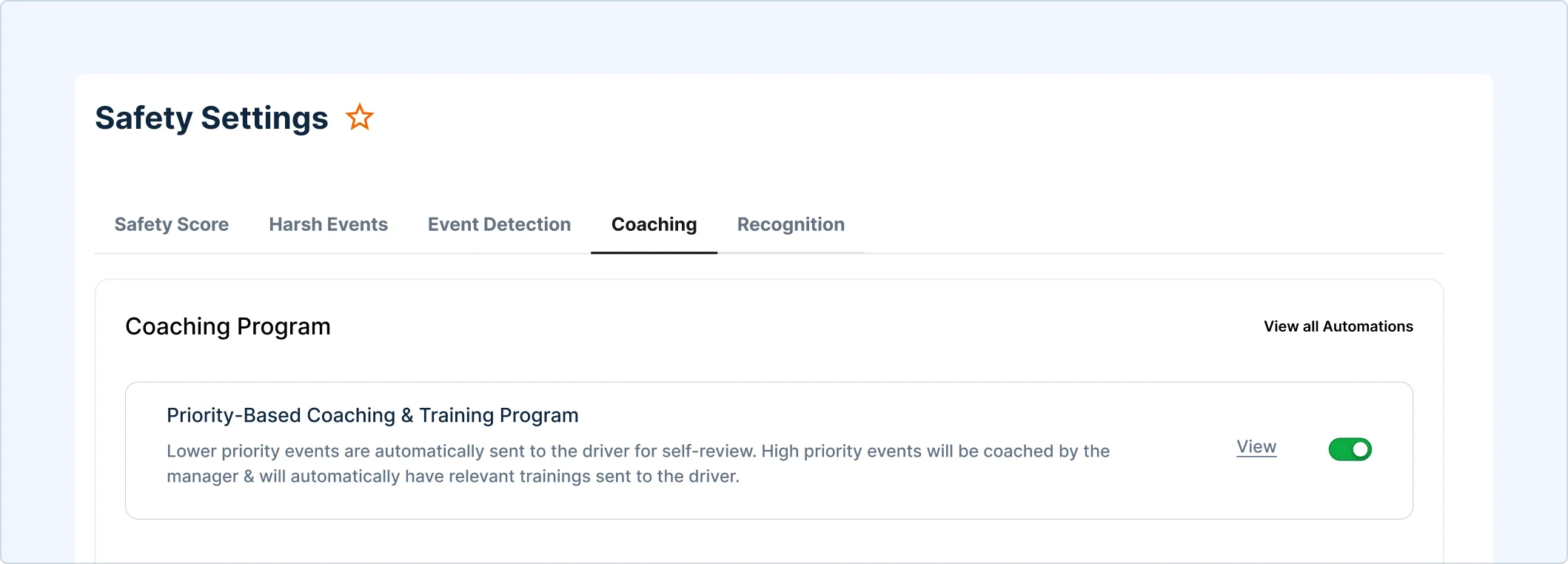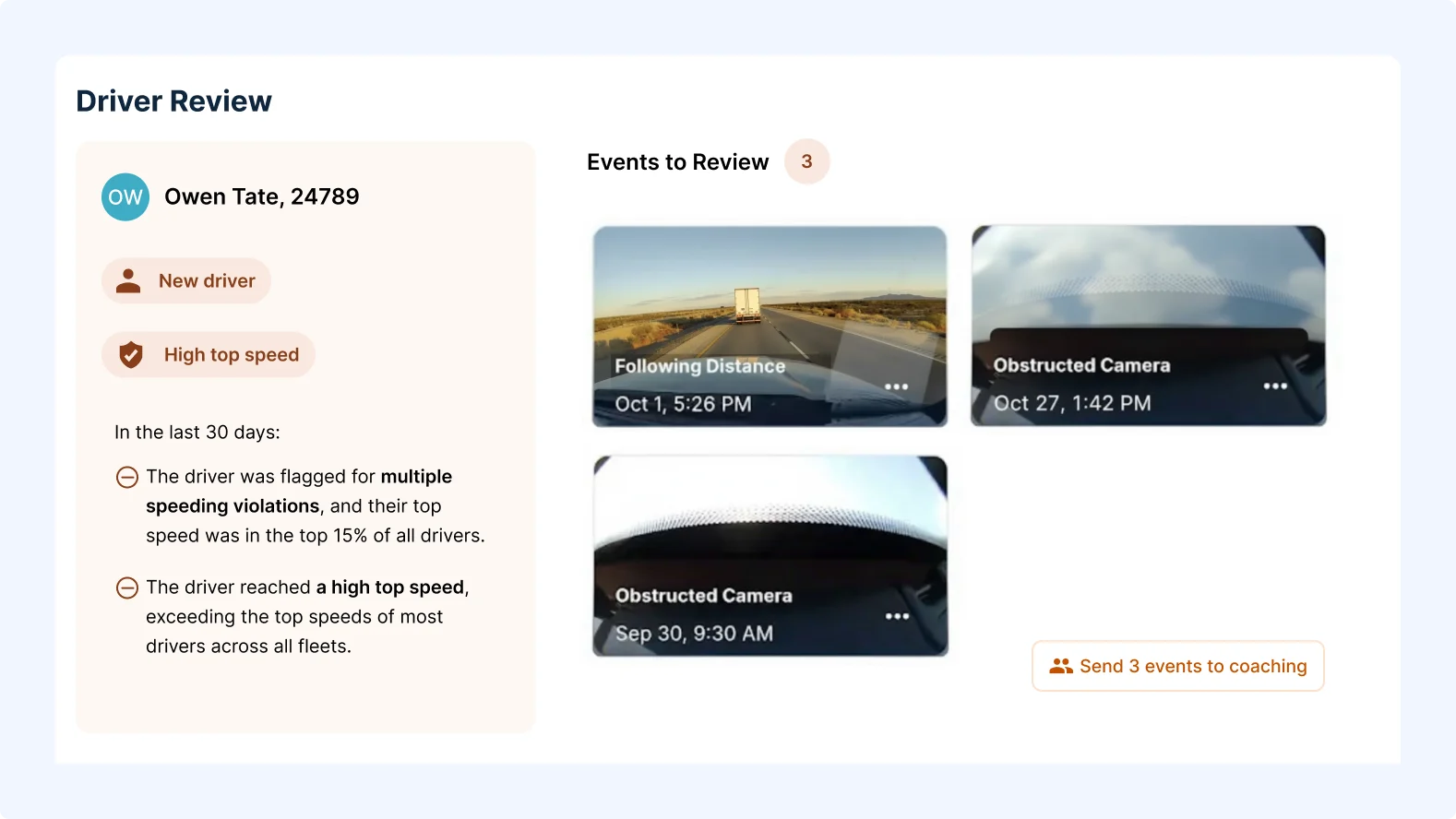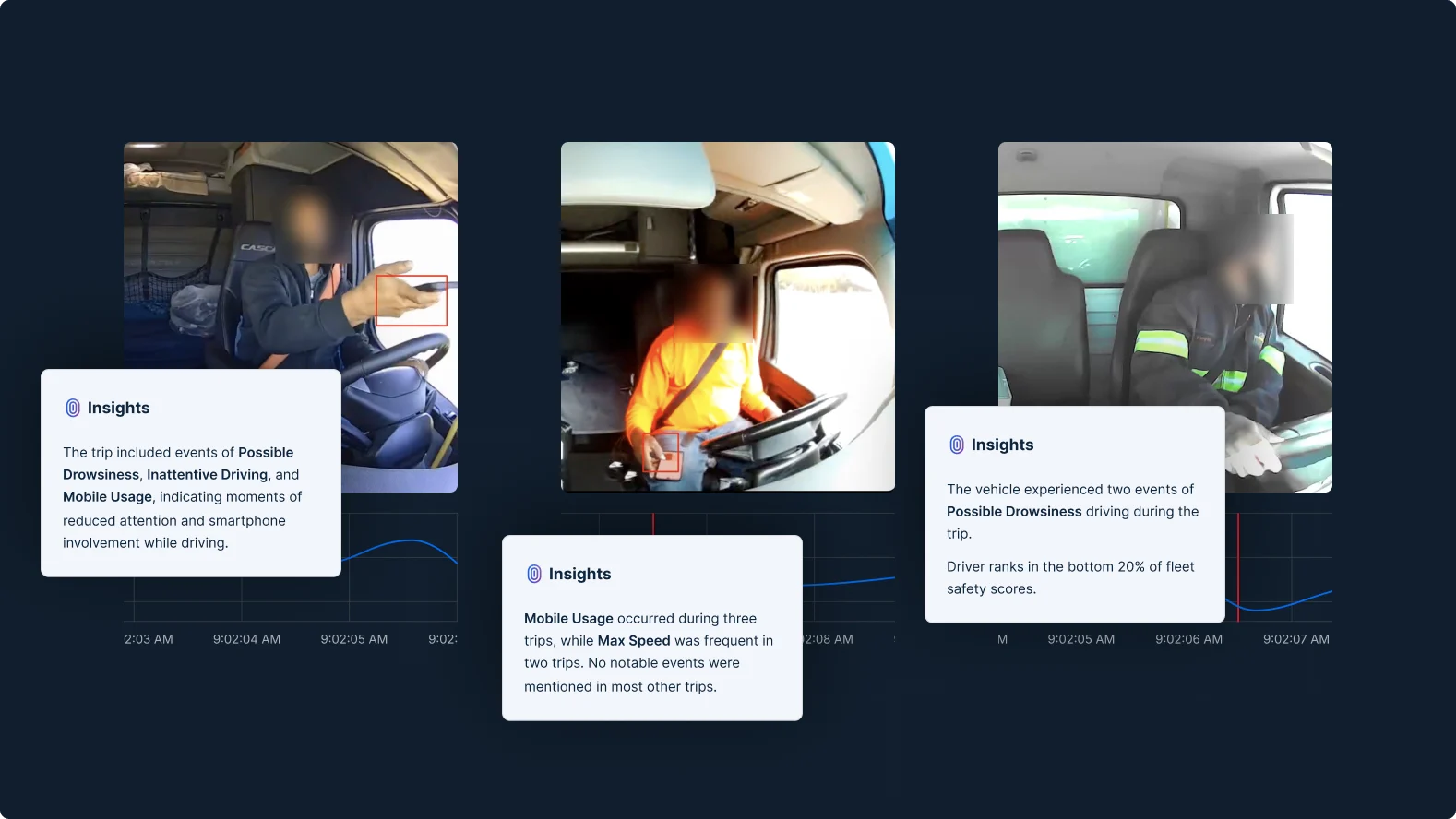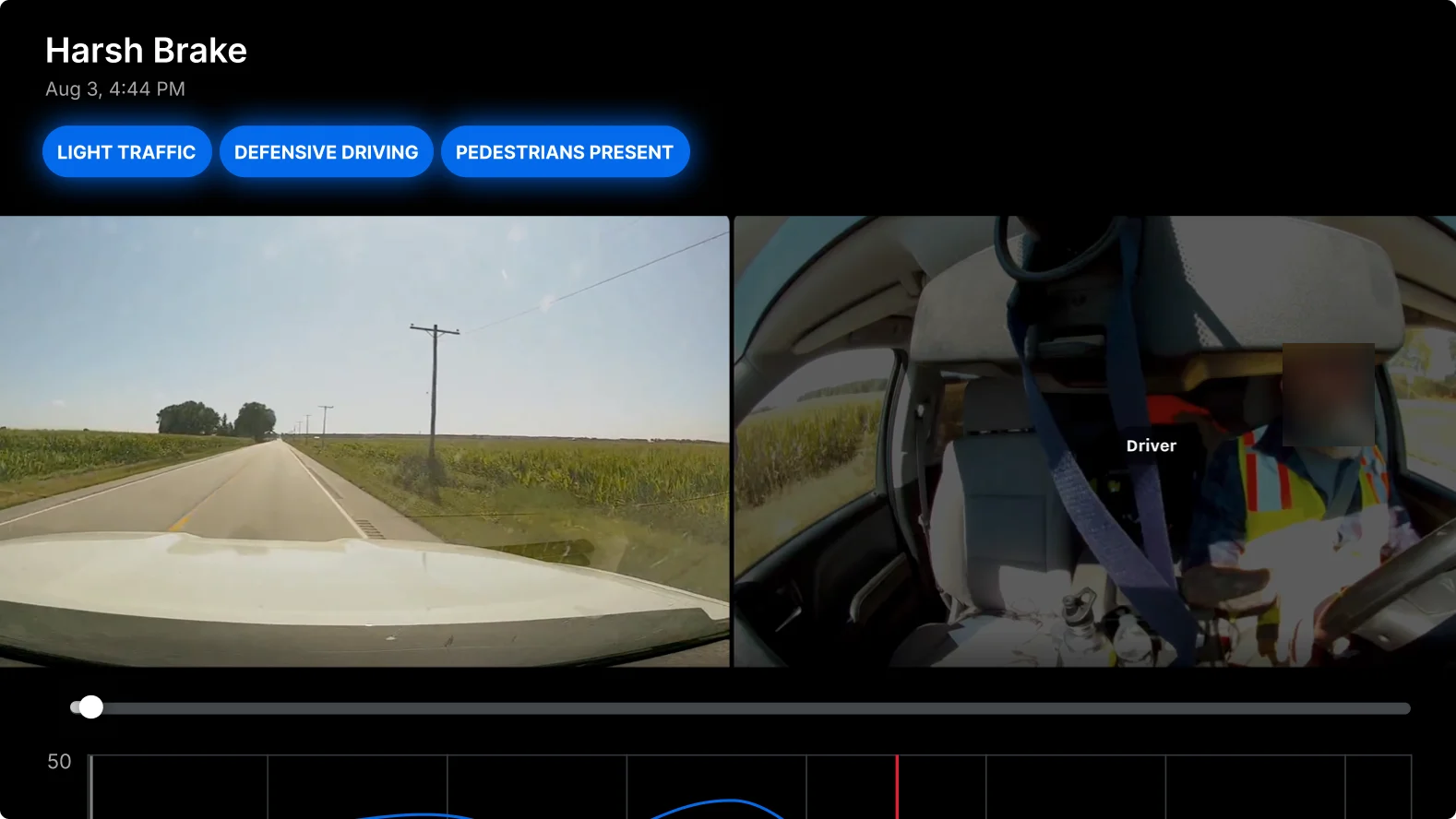World-class,<br>
AI-powered coaching, at scale
Deliver consistent driver feedback and recognition without overburdening lean safety teams using Samsara's automated coaching.
Check our pricesHow do I effectively coach my drivers?
Effective coaching starts with consistency and focus. Samsara automates the triage of low-risk events, surfaces repeat behaviors, and provides AI-generated summaries—so managers can focus on coaching where it matters most. Use 1:1 sessions, group coaching templates, and self-review to build a scalable program that improves habits without increasing workload.
What is the difference between in-cab coaching and manager-led coaching?
In-cab coaching provides real-time alerts to help drivers correct behaviors in the moment. Manager-led coaching uses video, context labels, and behavior trends to deliver targeted feedback after the fact. Samsara supports both—helping you automate low risk driving behaviors, and equip managers with the tools to lead meaningful coaching when it does.
How do I get driver buy-in for dash cams without them feeling micromanaged or watched?
Start with transparency: hold Q&A sessions and clearly communicate how safety events are detected and reviewed. Samsara only surfaces relevant events and gives drivers the opportunity to self-review and track their own progress. With in-app recognition and leaderboards, drivers see how these tools help them grow—not just monitor them.
What are best practices for building driver recognition programs within my organization?
Use Samsara Safety Scores, coaching completion, and in-app behavior insights to power a transparent and motivating recognition program. Celebrate top performers with scorecards, leaderboard shoutouts, or personalized feedback. Reinforce positive behavior often—ideally weekly or monthly—and ensure every driver has the opportunity to improve, get recognized, and feel valued.









